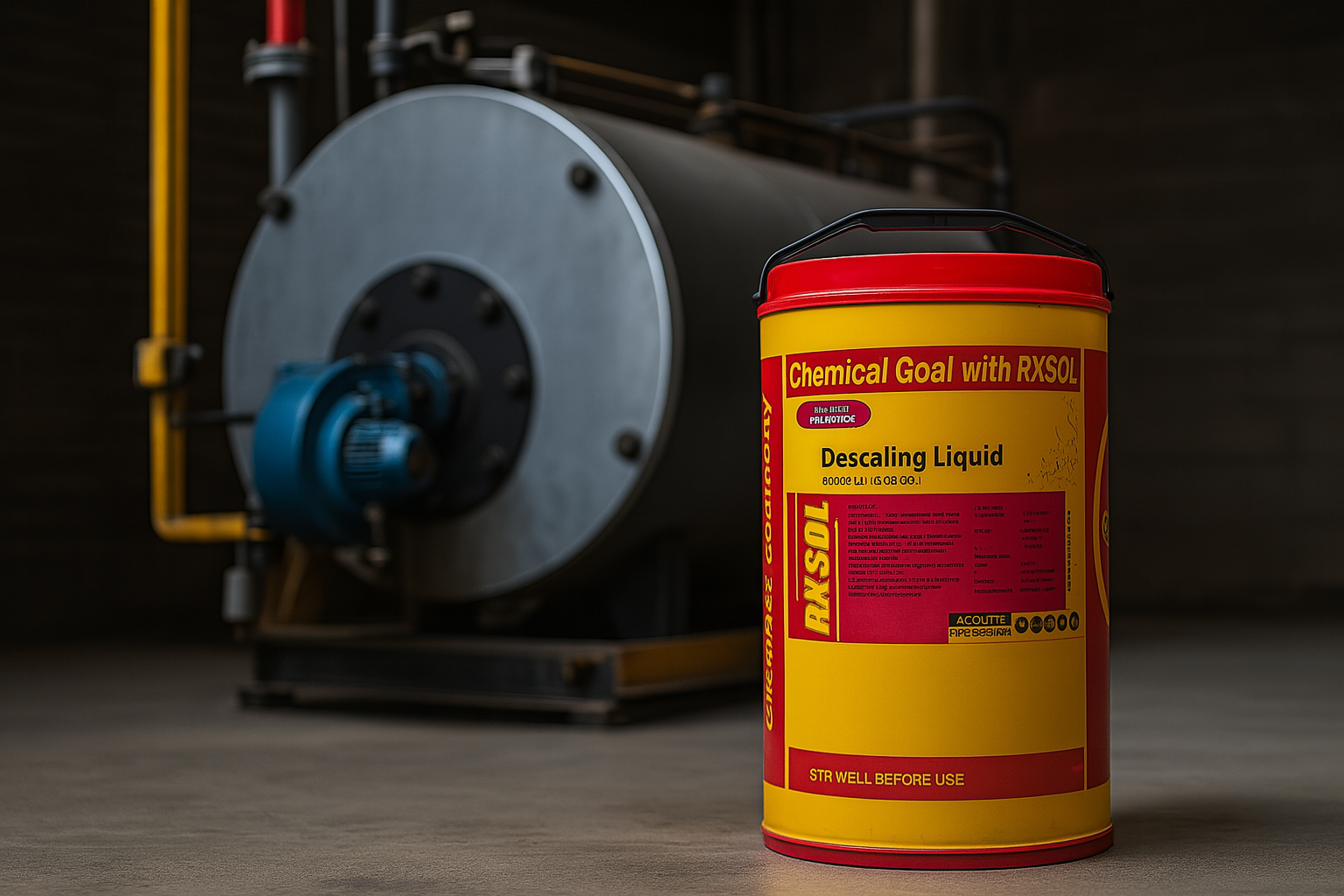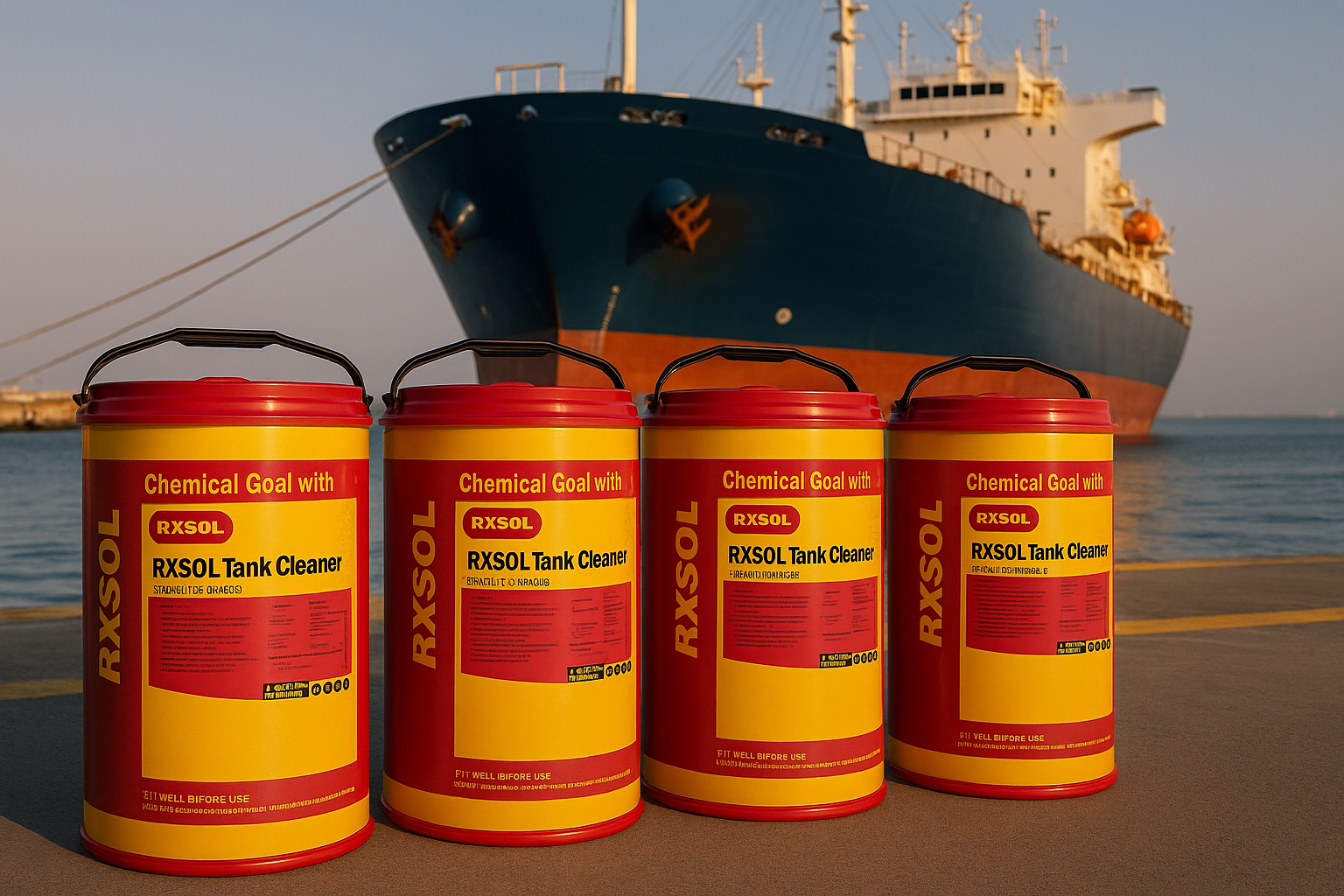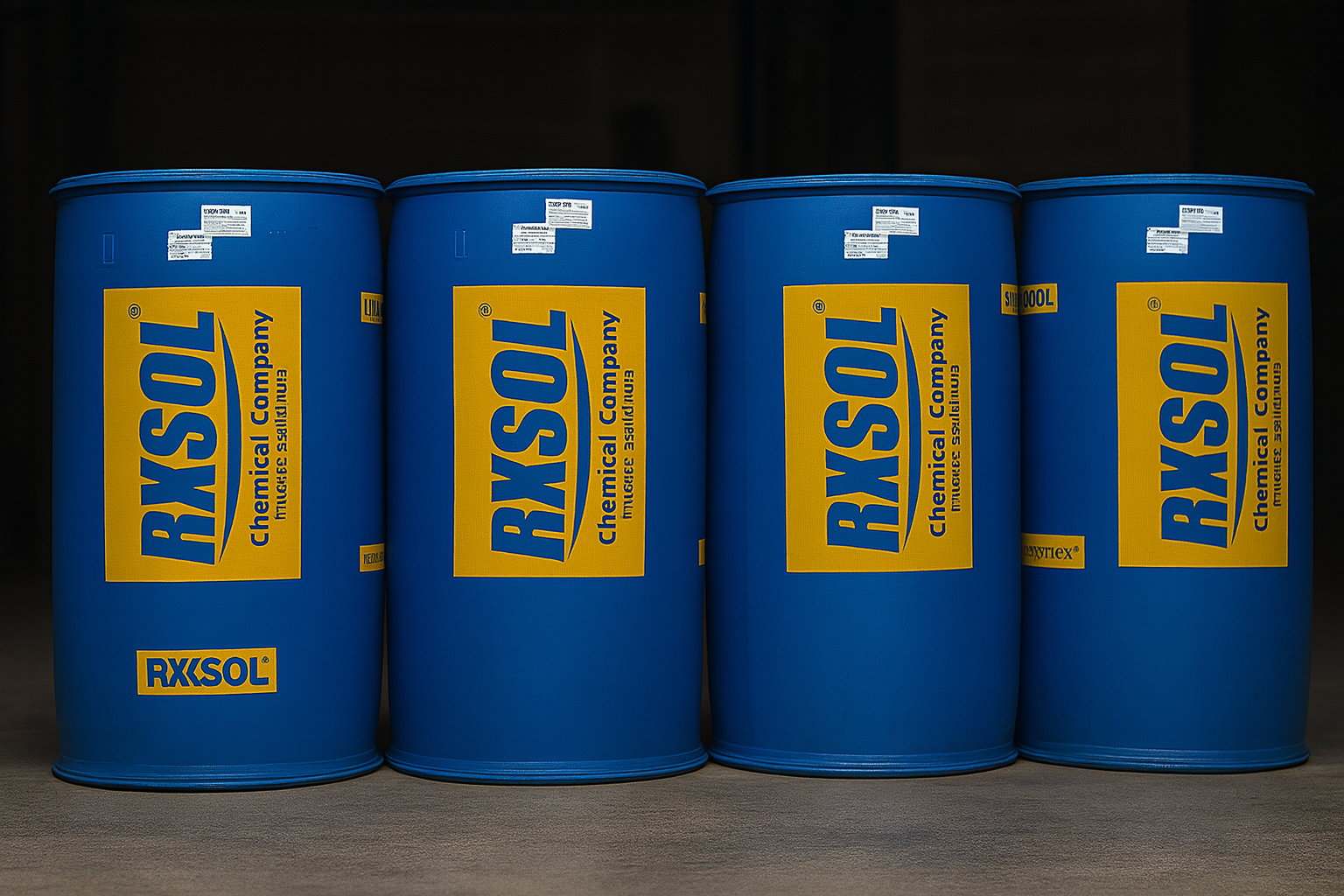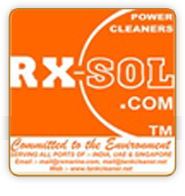Supply Location
DESCRIPTION :
RXSOL 4000 is a multicomponent, multifunctional formulation which prevents corrosion, microbiological growth in single product treatment programme.
PERFORMANCE:
CORROSION: Effectively prevents corrosion due to Carbon Dioxide, inorganic salts, dissolved oxygen & Hydrogen sulphide contamination from sour fluid or bacterial action. The inhibitor acts as a cathodic polarizer.
MICROBIOLOGICAL GROWTH: Effectively prevents the metabolic function necessary for reproduction of the bacteria cell. Successfully prevents anaerobic/aerobic and sulphate reducing bacteria.
APPLICATION :
Inhibitor, corrosion, multicomponent, multifunctional: For prevention of corrosion and microbiological growth in water flood systems during hydrostatic testing and other applications
DOSAGE :
RXSOL 4000 can be fed directly or through chemical doses pump. Doses may vary with the quality of water to be treated and the residence time of the water in the system.
DOSING RATE OF RXSOL 4000
Minimum 50 LPH
Maximum 125 LPH
Actual dosing rate shall be proportionate to pumping rate.
Flow Rate Of The Product
Minimum M3/ HR : 150.0
Maximum M3/ HR : 350.0
Location for dosing of RXSOL 4000 corrosion inhibitor chemical
# Corrosion inhibitor shall be dosed in the displacement water piping at the suction of main pump/ booster pump
For Storage tank it can dose 0.50 to 0.15 Ltr per 100 Ltr Water.
CHEMICAL SPECIFICATION :
|
Form |
Liquid |
|
Colour |
Colourless to slightly Yellow |
|
Odour |
Sharp |
|
Flash Point |
> 100C |
|
Density |
1.05-1.11 g/cm3 (25C) |
|
pH |
3 - 7 |
Benefit / Advantage :
-
RXSOL 4000 is a liquid multifunctional chemical designed to completely treat hydrostatic test fluid, saltwater packer fluid, saltwater drilling fluid, during Hydro-testing and oil field water injection programme.
-
RXSOL 4000 contains an effective filming corrosion inhibitor, oxygen scavenger and biocide, altogether in a single formulation convenient to dose with single chemical injection pump or skid.
-
RXSOL 4000 is economical to use as handling is limited to one chemical.
TECHNICAL DATA SHEET
CORROSION PROBLEMS DURINGHYDROTESTING OF PIPELINES
The major factor which contributes to the corrosion in hydro-static test water is the dissolved oxygen and dissolved solids do not have much impact on the corrosion rate except the chloride content. The presumptions like not using the corrosion inhibitor if the water is not with high mineral content could beM disastrous as in fact any corrosion process, even a very mild one, will be accompanied by the set up of galvanic cells and formation of corrosion products deposits. Such environment makes the conditions ideal for the corrosion process to continue at accelerated rate once the process fluid will be run through the line.
Effect of Dissolved Oxygen:
Dissolved oxygen plays a key role in corrosion or iron in natural waters, but its effects can be conflicting and partially dependent on other environmental factors. In near neutral pH waters at ambient temperature, dissolved oxygen provides the reduction reaction which sustains the corrosion of iron. However, oxygen also plays a role in formation of semi-protective iron oxide films on the metal, and the more protective films are formed at higher oxygen concentrations. Once these films are formed, however, oxygen provides the main driving force for initiation of pitting (leading to tuberculation) or other forms of localized corrosion. The first part of this discussion is for conditions in the absence of calcium carbonate or other external inhibiting species.
At sufficiently high pH values, iron oxide or hydroxide layers can be formed. The first of these is probably ferrous hydroxide which can be formed by an overall reaction such as
Fe + H2O + 1/2 O2 = Fe (OH)2
This solid is often found next to the metal surface and can act as a diffusion barrier to oxygen. Further oxidation of this product yields hydrous ferric oxide which comprises most of ordinary rust. An intermediate oxidation stage, Fe3O4. nH2O often forms as a layer between the ferric and ferrous compounds. In the absence of dissolved oxygen, the corrosion rates for both pure iron and steel becomes negligible in near neutral pH water at room temperature.
Corrosion rates may be high when the metal is first exposed to air-saturated water, but the iron oxide films formed over a period of a few days act as a barrier to diffusion of oxygen to the surface and a steady state corrosion rate is obtained. This steady state rate is proportional to oxygen concentration, since the oxygen diffusion rate is proportional to its concentration.
An oxygen concentration of about 6 mg/l corresponds to air-saturated water. At still higher oxygen concentrations, the uniform corrosion rate of mild steel may decrease abruptly. This effect is apparently due to passivation of the iron which involves either the oxidation of the normal ferrous hydroxide layerto one which has better protective properties or the formation of a thin chemisorbed oxygen layer on the metal surface. More oxygen is required in waters containing chloride ions and passivation of mild steel cannot occur if the chloride concentration is high enough. The breakdown of passivity in the presence of moderate amounts of chlorides (more than about 20 ppm, see below) is often accompanied by severe pitting or crevice corrosion. The effect of solution flow rate on mass transport of oxygen to the corroding surface can also give rise to diverse effects. At moderate oxygen concentrations and flow rates, increasing the flow rates increases the corrosion rate due to the increase in amount of oxygen transported to the surface. At higher flow rates, the surface oxygen concentration can become high enough to cause passivation, provided the chloride content is not too high. Still higher flow rates, over 4.0 M/sec, can greatly accelerate corrosion by erosion of the protective films, combined with fast transport of oxygen to the surface by turbulent flow. At the other extreme, stagnant conditions are usually
most conducive to pitting and other forms of localized corrosion. The threshold for chloride effects on passivity is ill defined. As little as 20 ppm. Chloride may cause breakdown and pitting but the threshold may be higher depending on solution composition.
Effect of Dissolved Salts:
Dissolved salts (for example, ions such as Na+, Cl- , SO42-, Ca2+ , Mg2+, HCO3, CO32-can have a number of effects, some of which depend only on the general effect of ions, whileothers depend on the individual chemical species. Examples of the first class of effects are given below.
Increasing salt concentration increases solution conductivity which can have several effects.
Increasing salt concentration generally decreases the equilibrium concentration of dissolved oxygen and CO2
Contrary to early predilections, solution conductivity itself has little effect on most modes of uniform or localized corrosion. This is because the local anodes and cathodes are so close together that the resistance offered by the solution is much less than equivalent electrochemical reaction rate resistance. Solution conductivity can, however, affect the range over which the effects of attack due to galvanic coupling of dissimilar metals is extended. Attack can extend for example, from about 1 cm. from the joint in soft waters to more than 10 cm. in water with significant dissolved salt content. Changes in solution conductivity can have more subtle and significant effects. It has been proposed that moderate increases in conductivity (by dissolved NaCl) from that of very soft or distilled water can lead to increased corrosion rates due to formation of a less protective Fe (OH)2 film. The film is less protective since it is formed further away from the surface than in less conductive waters. This in turn is due to coupling of local anodic (source of Fe 2+) and cathodic (source of OH-) areas at greater distances in the more conductive solution. The initial increase in corrosion rate might also have to do with some specific effects of chloride and a number of postulates on these effects have been offered. Specific effects of chloride are discussed below.
There is little direct evidence for either the Fe (OH)2 film or chloride effect arguments. It has recently been proposed that an increase in solution con-ductivity may have the effect of actually promoting a more protective coating on iron in the presence of Calcium Carbonate film forming precursors. Correlation between the electrical impedance and protectiveness of scales and a quantity related to the conductivity of the solution was found. Conductive salts facilitate protective film formation, provided that sufficient temporary hardness exists.
The other overall effect of dissolved salts that of decreasing the solubility of dissolved gases. Since the dissolved oxygen content is the main controlling factor under the conditions, "salting out" of oxygen causes a decrease in corrosion rate.
Technical Notes
This effect only becomes pronounced at higher salt concentrations and is most likely unimportant in natural fresh waters. Chloride is the most deleterious individual ionic species normally occurring in natural waters. Much of this appears to be due to the ability of chloride to promote pitting by penetration or local destruction of otherwise protective iron oxide films. It is quite difficult for a uniform, true passive iron oxide film to be formed in the presence of chloride ions. It is difficult, however, to quantify the relation of corrosivity to chloride concentration in natural waters. The threshold concentration of chloride above which pitting of iron is possible, is said to be About 10 ppm. The role of sulfate is more nebulous, especially since sulfate does not appear to have the film piercing properties that chloride displays.
The corrosivity of air-saturated domestic waters depends on the following factors
.
The proportion of corrosive agents (chloride and sulfate ions) to inhibitive agents (bicarbonate, carbonate, hydroxide, and calcium ions).
The concentration and degree of effectiveness of the corrosive and inhibitive species.
The velocity of flow which affects the rates of diffusion of both types of species to the surface.
The relative effectiveness of the species involved is not definitive, but may be influenced by one or more of the others. The interdependence of the relevant factors is also emphasized by the observation that "intermediate proportions" of corrosive to inhibitive species, which result in incomplete protection (to uniform corrosion) at a particular solution flow rate, are conducive to pitting and/or tuberculation.
Effect of Micro – Organisms:
All water used for Hydro-testing generally contains iron bacteria and sulphate reducing bacteria. The iron bacteria attack to the pipe wall mostly at 6 o’clock location and produces tubercle of iron oxide by metabolic action. Below the tubercles, sulphate reducing bacteria grows and generates H2S from sulphate of water. The H2S goes on reacting with iron forming Fe2S. This is combined with auto catalytic formation of HCI under tubercle and lead to deep pitting and perforation of the pipe wall. The mechanism is more pronounced under stagnant condition and is relevant of Hydrostatic testing.





